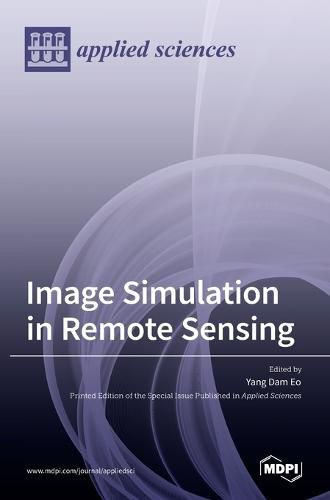Readings Newsletter
Become a Readings Member to make your shopping experience even easier.
Sign in or sign up for free!
You’re not far away from qualifying for FREE standard shipping within Australia
You’ve qualified for FREE standard shipping within Australia
The cart is loading…






This title is printed to order. This book may have been self-published. If so, we cannot guarantee the quality of the content. In the main most books will have gone through the editing process however some may not. We therefore suggest that you be aware of this before ordering this book. If in doubt check either the author or publisher’s details as we are unable to accept any returns unless they are faulty. Please contact us if you have any questions.
Remote sensing is being actively researched in the fields of environment, military and urban planning through technologies such as monitoring of natural climate phenomena on the earth, land cover classification, and object detection. Recently, satellites equipped with observation cameras of various resolutions were launched, and remote sensing images are acquired by various observation methods including cluster satellites
However, the atmospheric and environmental conditions present in the observed scene degrade the quality of images or interrupt the capture of the Earth’s surface information. One method to overcome this is by generating synthetic images through image simulation. Synthetic images can be generated by using statistical or knowledge-based models or by using spectral and optic-based models to create a simulated image in place of the unobtained image at a required time. Various proposed methodologies will provide economical utility in the generation of image learning materials and time series data through image simulation.
The 6 published articles cover various topics and applications central to Remote sensing image simulation. Although submission to this Special Issue is now closed, the need for further in-depth research and development related to image simulation of High-spatial and spectral resolution, sensor fusion and colorization remains.
I would like to take this opportunity to express my most profound appreciation to the MDPI Book staff, the editorial team of Applied Sciences journal, especially Ms. Nimo Lang, the assistant editor of this Special Issue, talented authors, and professional reviewers.
$9.00 standard shipping within Australia
FREE standard shipping within Australia for orders over $100.00
Express & International shipping calculated at checkout
This title is printed to order. This book may have been self-published. If so, we cannot guarantee the quality of the content. In the main most books will have gone through the editing process however some may not. We therefore suggest that you be aware of this before ordering this book. If in doubt check either the author or publisher’s details as we are unable to accept any returns unless they are faulty. Please contact us if you have any questions.
Remote sensing is being actively researched in the fields of environment, military and urban planning through technologies such as monitoring of natural climate phenomena on the earth, land cover classification, and object detection. Recently, satellites equipped with observation cameras of various resolutions were launched, and remote sensing images are acquired by various observation methods including cluster satellites
However, the atmospheric and environmental conditions present in the observed scene degrade the quality of images or interrupt the capture of the Earth’s surface information. One method to overcome this is by generating synthetic images through image simulation. Synthetic images can be generated by using statistical or knowledge-based models or by using spectral and optic-based models to create a simulated image in place of the unobtained image at a required time. Various proposed methodologies will provide economical utility in the generation of image learning materials and time series data through image simulation.
The 6 published articles cover various topics and applications central to Remote sensing image simulation. Although submission to this Special Issue is now closed, the need for further in-depth research and development related to image simulation of High-spatial and spectral resolution, sensor fusion and colorization remains.
I would like to take this opportunity to express my most profound appreciation to the MDPI Book staff, the editorial team of Applied Sciences journal, especially Ms. Nimo Lang, the assistant editor of this Special Issue, talented authors, and professional reviewers.